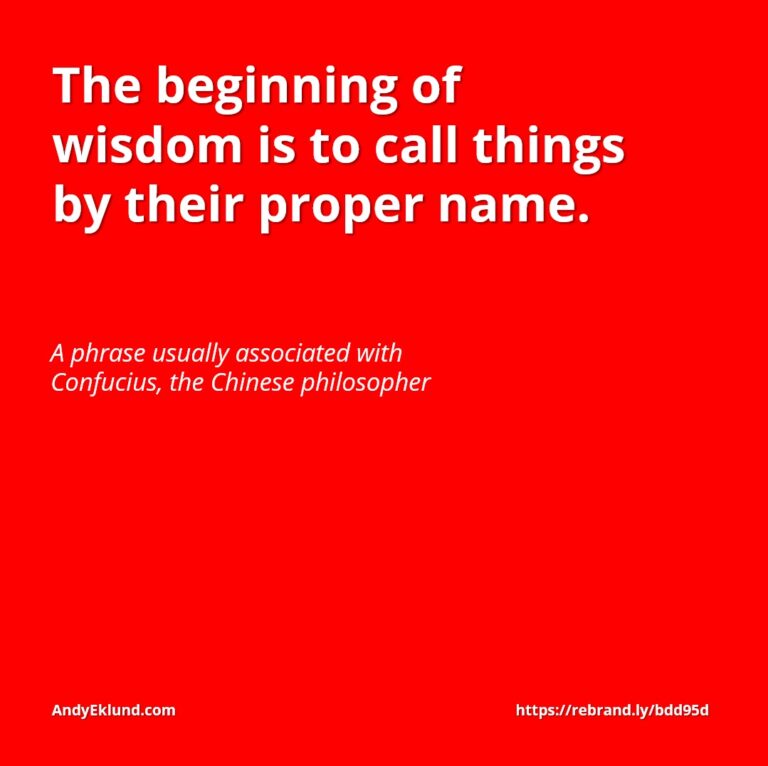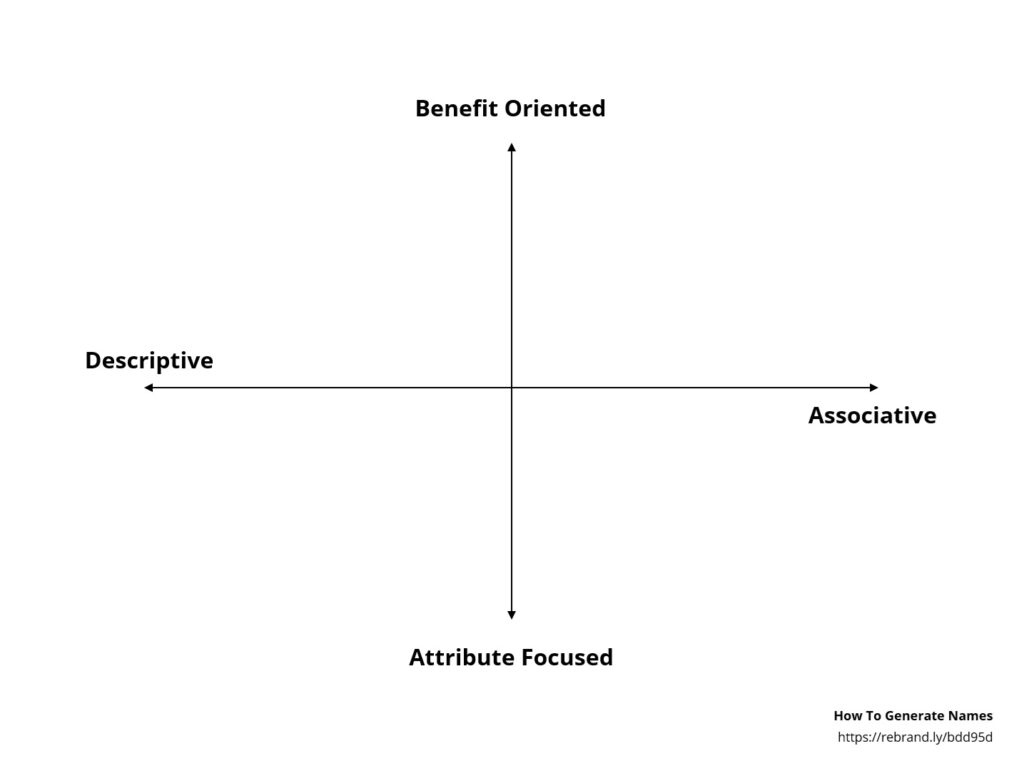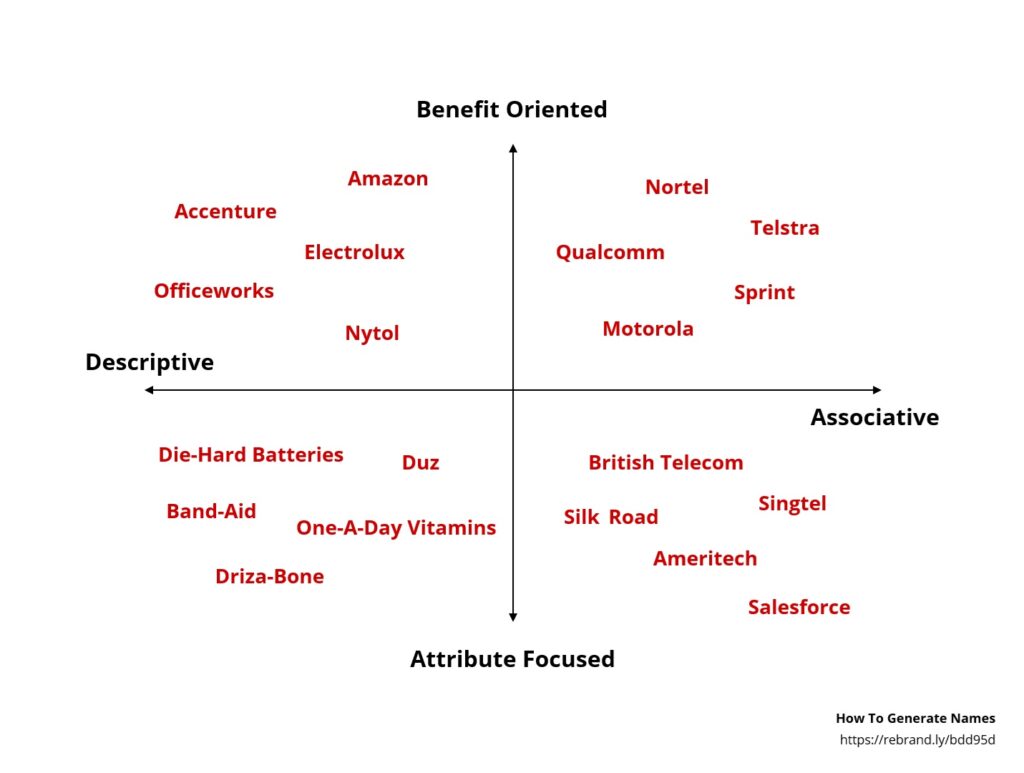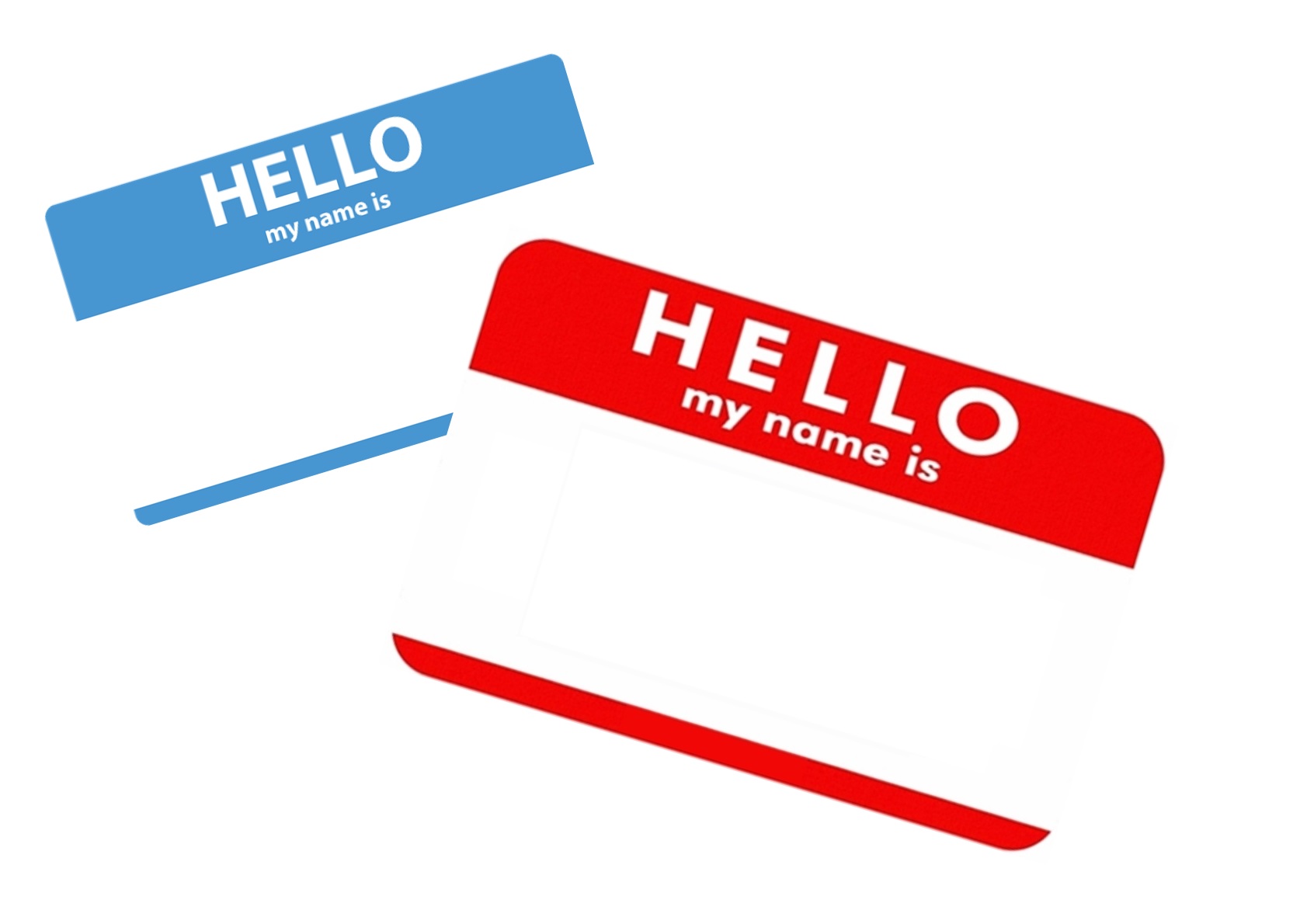Generating the right name for an organisation is arguably one of its most important decisions.
As the most visible form of its reputation, a good name …
- Serves as the foundation for everything the organisation does, from setting its strategic direction to establishing a competition position in its marketplace.
- Suggests a connection to customers, stakeholders and employees that is relevant, memorable and timeless.
- Offers an enduring promise or value in a few syllables that’s emotionally appealing, easy to recall, and distinctive.
- Sets and promotes the values of the organisation or its brand(s) in a single insightful point.
In terms of the name itself, it should be:
- Easily and correctly pronounceable in all relevant languages at first sight
- Simple
- Memorable
- Unique
- Ownable
A Few Considerations to Start
While it’s not necessarily a task for just anyone, the process to generate the right name – for the company or organisation, its product or services – has basic elements which need consideration before the process begins.
Whether the name is all-new or changed to reflect an altered direction or position, there are roughly five tactical steps to generate names.
- Articulate the direction.
- Gather quality market research.
- Generate the potential names.
- Test a small selection of names, and once launched,
- Determine how you will monitor the name after it’s in the public domain.
Also, it’s important to note before starting the entire branding architecture must work together to ensure an organisation’s or company’s brand name works collaboratively with each individual brand name. The process of generating names brows in complexity total branding architecture that must work to ensure an organisation or company brand works with each individual brand without causing unnecessary confusion or competition. that the process of generating names grows in complexity when a single name or brand of an organisation’s …
- products (such as Head & Shoulders shampoo)
- services (such as United Airlines Polaris experience), or
- phrases (such as Nike’s “Just Do It”)
… must work in combination with the overall brand. . The discussion about this family of names or brands should be part of Step #1 (below). For this article, I’m going to focus primarily on single name generation.
Five Basic Steps to Generate Names
1. Articulate your direction.
Above all else, naming decisions must be linked to the future strategic direction of the business.
This conversation should be had at the highest levels, as soon as possible, with the key decision makers of the organisation or client.
- If you’re creating a new organisation name, it should reflect the company’s vision, mission and values, and its long-term business plan.
- If you’re naming a product or service, it should reflect the brand strategy, promise and unique selling proposition (USP).
- If you’re changing a name, the new word must reflect the shifting wants and needs of the target market. Otherwise, why (very expensively) would you change the name?
Hopefully this goes without saying, but renaming is not an answer for profound problems, an unclear vision, or internal cultural issues.
Understand any expectations the decision makers may have.
Here’s a short list of questions I’ve used in the past. Adapt these to suit your situation.
- What is the desired result from this name change?
- Is there any leverage with the old name?
- How will the name change impact or leverage corporate identity?
- What do we want the name change to signal?
- Are the vision and mission of the company fully articulated to help guide the process?
- Will a new name or identity help (re)establish relationships with key audiences?
- Who are all of the targeted audiences in order that we need to communicate the name change and its purpose?)
- What are the key (use any word below) that should be demonstrated in the new name?
- Benefits
- Attributes
- Descriptions
- Associations
- Is there a particular target audiences or influencers who are the primary audience(s) for the name change?
- What criteria will you use to select the best name?
I’ve also asked about other brand names they like, just to get a sense of the type of name. Literal? Abstract? Imaginative? Metaphorical? Historical?
Determine in advance what the approval process will be.
That includes who (else) may need to be involved in the overall process. These groups might include:
- Internal staff such as Legal, Communications, Technology (website), Human Resources, etc. – anyone whom you may need to get their opinions or advice in advance. If possible, this group should include a graphic designer who will suggest how the name will be used visually, especially if there’s a collection of names and logos to consider.
- The decision makers who buy and engage with the organisation and its offerings, such as consumers, customers or other types of buyers.
- The shareholders and other influential stakeholders of the organisation as a whole.
- The employees who are the face of the organisation or the brands in their communities.
- Large customers and other external parties who will interact with and respond to the new name. This might include joint venture partners, for example.
Talk to your employees. What do they think?
All audiences are important, but employees leave your business every night and go home to their communities and return the next day. They are often significant resources of real-life stories and testimonials about ,,,
- Your company, its products and services
- How the names are used colloquially
- How they will be associated in an every-day type of way.
Think of your employees as a first-line focus group to get constructive feedback to move forward generating potential names.
2. Gather quality market research.
Determine which of your current brand attributes need to stay, and which need to transition.
- What do key audiences think of the current name’s attributes, and if it’s been conducted, what future attributes may be credible? Some brands also determine how flexible or elastic the attributes are.
- What are the target audience psychographics? What do these audiences think, feel and behave now, and can these emotional levers be reflected in the new name?
- How will the new or changed name leverage and carry forward these key audience’s positive aspects, or how will you help transfer those attributes from the old name to new name?
Decide how the new name may need to fit with other organisational brand names.
- How will your new name fit or co-exist with other current names?
- Is there a naming hierarchy or architecture the name must fit within?
Discuss how you will address an old name with (negative) emotional baggage.
- A smart audience will see through an attempt to wallpaper over existing company or brand problems. You don’t want a good new name to instantly be stained with former bad perceptions in your audience’s mindset.
Map out how the new name will work with names from real or perceived competition.
- How will your new name be differentiated among the names of your competition?
- The new name can’t sit in the same mental real estate as an existing name from another company, because you’ll confuse your audience – or worse, reinforce your competitor’s name over your new name.
- What issues, opportunities or gaps happening in the world generally, specifically in your own industry or business environment?
- Issues will tell you what naming areas you can’t own, where misperceptions may arise, or how a name may be spoken or used.
- Opportunities will tell you the opposite information, suggesting more broad boundaries, areas to explore creatively, or brand messages that might be conveyed to key audiences through marketing and communications. Understanding trends in your environment may also be helpful. However, consider the long-term consequence of opportunities and trends: will the name sound dated in the future?
- Gaps will identify areas where no company plays now, which may be an open place for your new name to live without competition.
The Naming Matrix
A good tool to determine where your new name might live in its own “real estate” is the naming matrix. It’s a fairly simple tool which places real, perceived or potential names on a matrix of:
- Specific attributes vs. anticipated benefits
- Descriptive elements vs associative qualities.
The tool is not meant to be precise or mathematical. It’s more of a discussion tool, mapping real or potential names into defined areas to determine where a new name might have the least amount of mental confusion.
3. Consider what group of people will create, then decide the name.
This section covers the literal brainstorming aspect of the name itself, into two distinct areas:
- The idea session, and
- The sorting of the potential names.
There are plenty of other articles on my blog covering how to brainstorm and select names, so I won’t go into too much depth here but will provide some key points below.
I’ve attached here a sample brainstorming exercise for participants to do in advance of your naming session, to get attendees to think of potential words, phrases, attributes, etc that may be useful in generating a new name. Adapt the document to suit your situation.
If there’s one point important to consider, don’t rush this section.
This is not your typical one-hour brainstorm. There should be multiple sessions with multiple participants (both inside and outside the company), with plenty of incubation time between meetings to allow other names to percolate and be considered in a constructive brainstorm session.
4. Test a small collection of names.
As you whittle the names to a few preferred options, conduct additional research to understand the following.
Determine how a potential name will work in other languages.
- Depending geographically where your brand name may be used, consider these points: pronunciation, spelling, individual sounds (for ex, a soft ‘g’ as in ‘go’ does not existing in some languages), cultural barriers, or perhaps most of all, anything that might be considered offensive.
- The word as a whole may need to be considered. Some words do not ‘roll’ off the tongue as it were.
- You may need to consider translating your name into another language (transliteration).
- There is no easily accessible global database on names, but a thorough search in your favourite browser will show you the extent of how your potential name is currently used.
Discuss what options are necessary to own the name.
- Work with in-house or external solicitors to check if the organisation can own and protect the name via trademark or service mark.
- Secure the most appropriate domain name.
- Think how the name will work with different social media outlets.
- Depending on the graphic component, will other attributes need to be considered? Some colours for example are trademarked as well.
Speak to key audiences about your shortened list of options.
- Survey key audiences to determine their reaction to the name, to hear if they can cleanly pronounce the name on first pass, and to understand if they are willing to use the name in two competitive spaces: in their head, and in the marketplace.
- Consider how they might use the name in general conversation. For example, in Australia where people are fond of abbreviating names, will your name hold up? Or, are you missing or ignoring a potentially better name? Will there be a nickname to your formal name? And, will that name need to be protected as well? (For example, ‘McDonald’s’ and ‘Macca’s’.)
Think how the name will be represented visually.
- This step requires a designer to help the organisation create a suitable branding iconography, involving logos, a palette of colour choices, packaging, stationery, web presence, etc.
- Ideally, this person should have been involved from the beginning to help shape how a name will be shown visually.
- The designer will also be helpful in making suggestions how to test the name, logo and other relevant aspects with key audiences.
Select the best name.
- Based on the criteria outlined in Step #1, choose the best name.
- By now, the designer will have (or will be) developing the logo, branding guidelines, etc. Other internal decision makers will no doubt develop a plan to announce and launch the name.
5. Determine how you will monitor the name after it’s announced.
The last stage will be largely the responsibility of other departments – the Legal Department, for example – but the final discussion will be maintaining and monitoring the new name as it goes into the public discussion.
Here’s a brief example of some internal considerations post-launch. In my role as communications director at MasterCard, I worked in collaboration globally and in each country with the …
- Legal Department, to ensure the new name, logo and colours were covered by copyright protection and met any regulations and guidelines
- Marketing Department, to distribute the new brand guidelines to local offices, affiliciates and advertising and marketing agencies, as well as answer any follow-up questions
- Member Services, to communicate with all members banks and financial institutions the background, reasoning and launch plan, particularly as several member banks did not like nor prefer the new name and logo. For this part in particular, our team development an issues management plan for any potential problems, just in case.
Finally …
Here’s an excellent post from the Australian Government (business.gov.au) with some additional support and suggestions for companies in Australia. It’s very likely your country may have its own similar website.
Here’s a website which you may find useful, if not fun: Name Generator from the UK
How have you generated names for your organisation? Any other suggestions to add? Please add any other thoughts or comments below.





No comment yet, add your voice below!